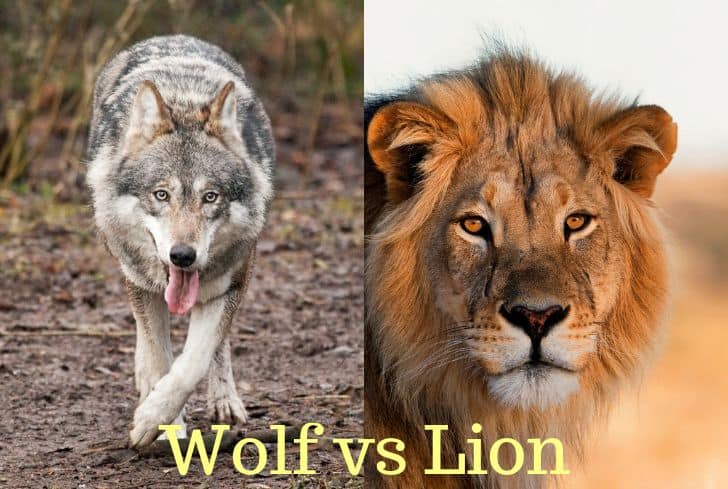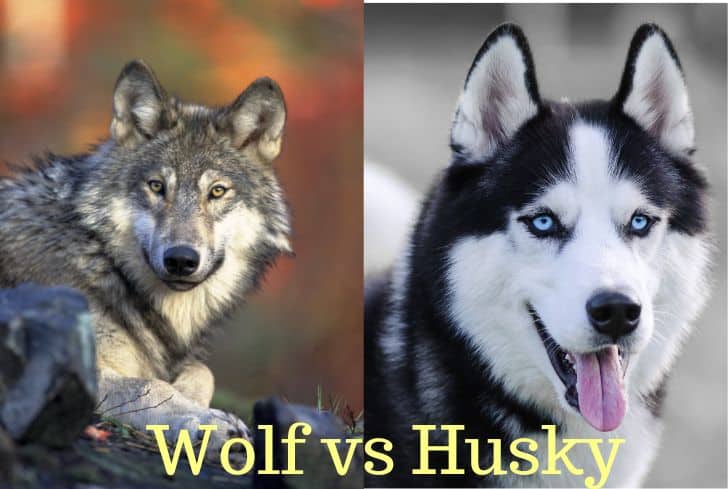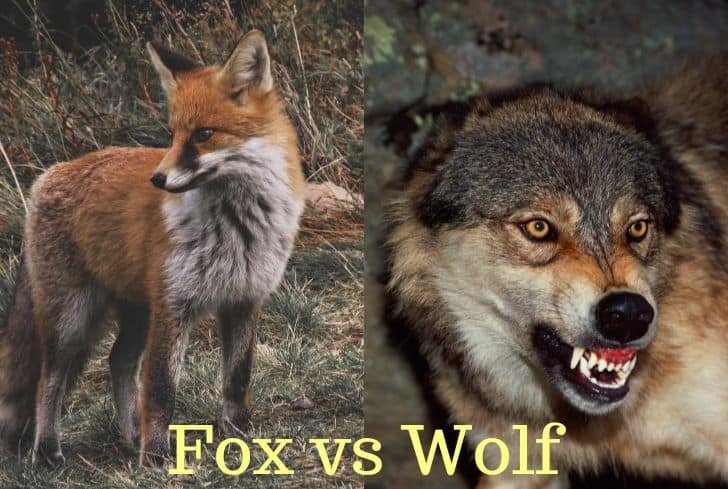13 Amazing Animals Similar to Beavers (With Pictures)
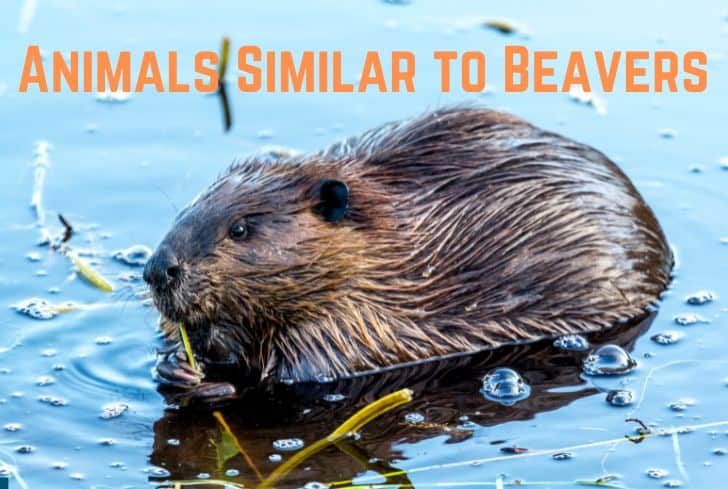
Beavers are intelligent, semi-aquatic mammals belonging to the rodent family. They are the second largest members of the family after capybaras.
All beavers fall into two species, either Eurasian beaver or North American beaver, named after their native regions.
In the wild, you can find other animals similar to beavers in terms of habitats, coloring, behavior, and physical features.
And when two different animals share similarities in such perspectives with only subtle differences, it can get quite confusing to tell which is which.
To ease that tricky identification burden, in this article, we’ll explore 13 animals similar to Beavers to unearth similar characteristics while also pointing out the key differences.
But to draw the best comparisons, let’s briefly learn the main characteristics of beavers.
About Beavers
Habitat
Beavers prefer freshwater habitats, including lakes, ponds, streams, and rivers. They construct their dams using mud, stones, and tree branches.
Physical characteristics
The intelligent creatures have long (about 80 centimeters) stout bodies covered by brown or greyish fur. Their small heads are decorated with small, round ears. They have enormous chisel-shaped incisors teeth for feeding.
The front feet are tiny, but with skillful fingers to manipulate food and for dam building. The hind legs have a webbing as an adaptation to semi-aquatic life. To round up, beavers carry a long, scaly, flat tail mimicking a paddle.
Diet
The animals are herbivores, with their diet consisting of tree barks, grasses, and aquatic plants.
Behavior
Beavers are nocturnal, spending their days in their shelters, often sleeping. They may sleep for extended periods but don’t hibernate during the winter.
They are social animals, living in families of about ten individuals. But they’re aggressive towards intruders and construct scent mounds to mark their territories.
13 Amazing Animals Similar to Beavers
1. American minks
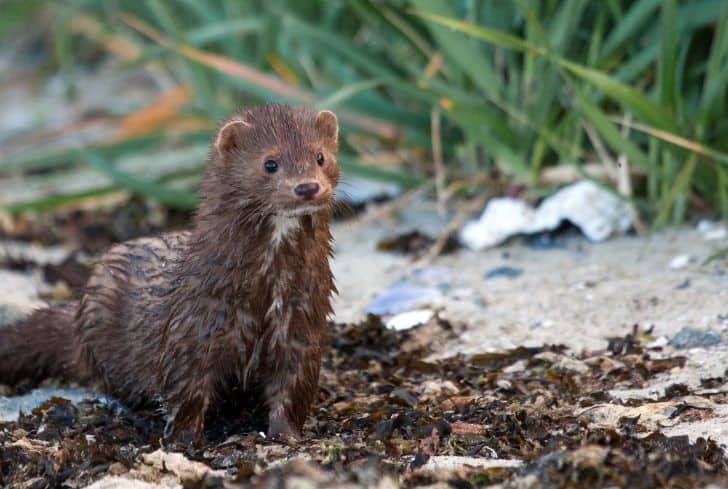
American minks are small semi-aquatic mammals from the Mustelidae family. They’re native to North America, as their name suggests.
These minks first draw similarities to beavers with their choice of habitats. They also prefer marshes, lakes, rivers, and streams.
What’s more, while the animals come from different families, it doesn’t stop them from sharing several characteristics. Although minks are shorter (about 45 centimeters), they share beavers’ long slender bodies and have short legs connected by webbing.
The best way to differentiate these two nearly identical creatures is by looking at the tails. While both are long, minks’ are bushy, unlike the paddle-shaped ones of beavers. Also, the American mink is a carnivore.
2. Groundhog

Also known as woodchucks, groundhogs are small, burrowing mammals in the rodent family.
The small animals live in North America, and you can easily confuse them for beavers because they often live in similar habitats: near marshes, rivers, lakes, and streams. Groundhogs’ brown, stout bodies and small rounded ears make differentiating the two animals tricky.
The main difference is while groundhogs inhabit near water bodies, you rarely see them in water, unlike their counterparts. The woodchucks also live in tunnels, contrary to their cousins, who construct dams in water. The other telling difference lies in tails. Groundhogs have short tails suited for their land life.
3. Muskrats
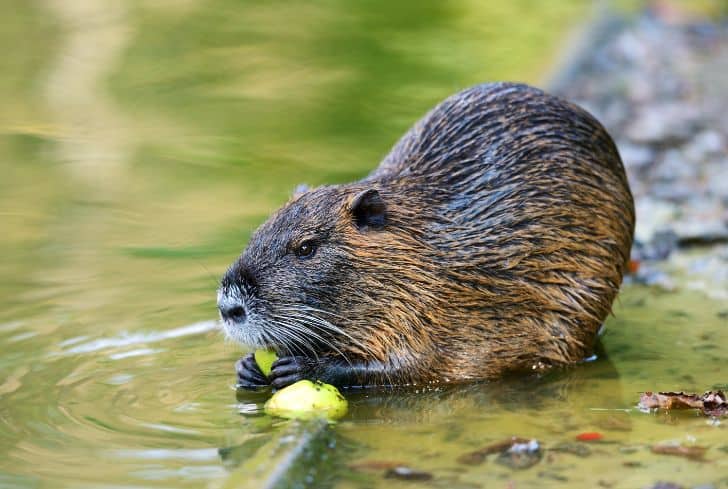
Muskrats are semi-aquatic rodents found predominantly in North America, although they’ve been introduced to Europe and Asia.
The two animals can, understandably, confuse you, especially when both are in the water, since Muskrats have stout bodies covered with brown fur, and both are roughly the same size as beavers.
Additionally, muskrats live in small families like beavers, although very territorial, and will confront other trespassers, including fellow muskrats.
Out of the water, some differences become evident as muskrats are much smaller than Beavers. They’re also easy to identify due to their hairless tails that narrow at the tip.
You can also notice the difference when the animals are feeding – while both are herbivores, muskrats mainly focus on grasses and aquatic plants, unlike Beavers, that are not afraid to bring entire branches down.
4. Quokkas
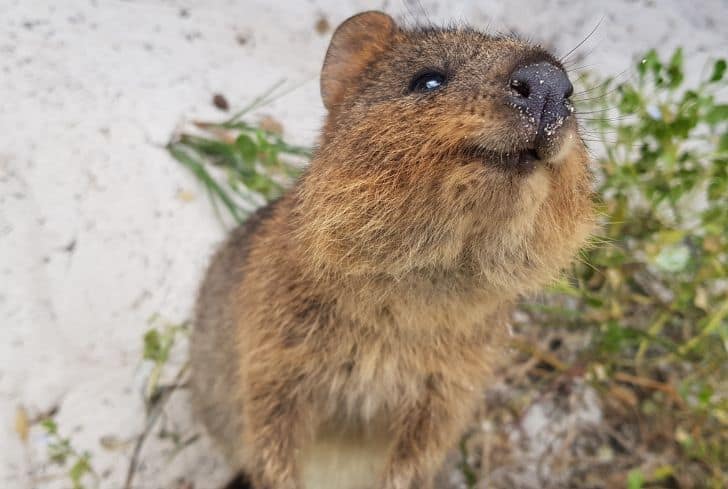
Quokkas are domestic cat-sized marsupials native to Bald Island and Rottnest Island in Australia. They are regarded as the happiest animals on the planet thanks to their ever-smiley faces.
While unrelated, quokkas bear a close resemblance to beavers. They have small rounded ears and stout bodies covered with brown furs, like their counterparts.
Furthermore, quokkas are omnivores and live nocturnal lives where they spend their daytime sleeping.
But you can still differentiate the two animals. Quokkas are expert tree climbers, while beavers are only limited to semi-aquatic life due to their webbed feet. They also have short, furry tails.
5. Nutrias
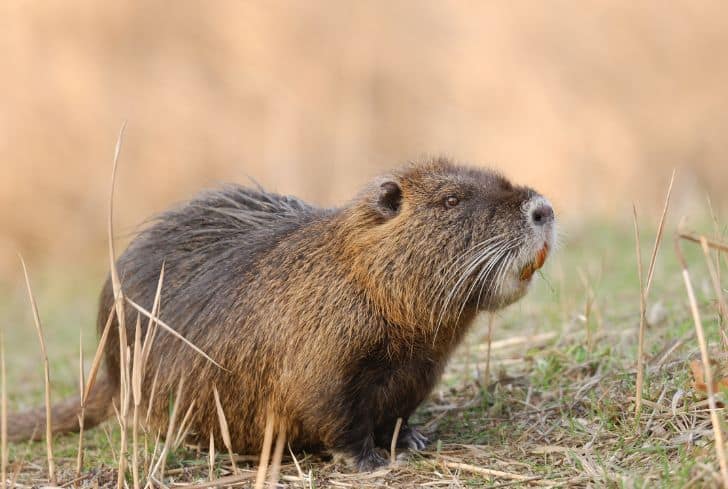
Nutrias, also called coypu, are large semi-aquatic rodents native to temperate and subtropical South America. But you can find them in other areas, including Europe, Asia, and Africa where they have been introduced primarily for their fur.
Nutrias share several physical characteristics with beavers, including webbed hind feet, long tails, and body shapes. You can even easily confuse a Nutrias for a beaver due to their brownish fur.
Behavioral similarities between these look-alikes include being omnivorous, preferring freshwater habitats, and living in colonies of more than two members.
The main difference between the two animals is size and fur texture. Nutrias are smaller and have much coarser fur. And if you get lucky enough to catch both animals feeding, nutrias have orange to yellow incisors while those of Beavers are whitish.
6. Water Voles
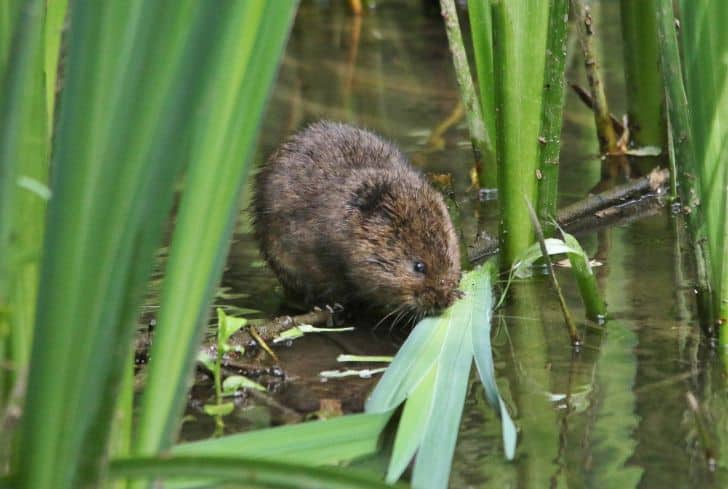
Water voles are small rat-like semi-aquatic rodents native to the United Kingdom.
You’ll be excused to mistake water voles for beavers , as both animals are built pretty much the same with stout bodies covered by greyish fur, short legs with webbed feet, and small rounded ears. Both animals also share the same diet.
But while both animals have so much in common, distinguishing them is an easy task. Water voles are much smaller than their family members, growing up to 8 inches long, and they live in tunnels that they dig in soft banks.
7. River Otters
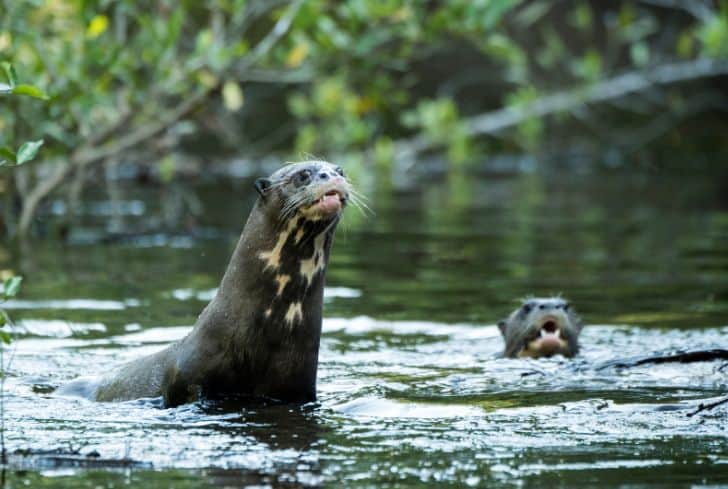
River Otters are small semi-aquatic mammals from the Mustelidae family.
River Otters are native to North America, sharing the same habitats as Beavers.
And while the two animals come from different families, physical appearances, particularly the brown bodies and small, rounded ears of otters, welcome the confusion.
To make it even more confusing, both animals spend most of their time in the water. But that’s where you can tell the difference, as river otters are curious animals that will often come close to you, unlike beavers.
8. Capybaras
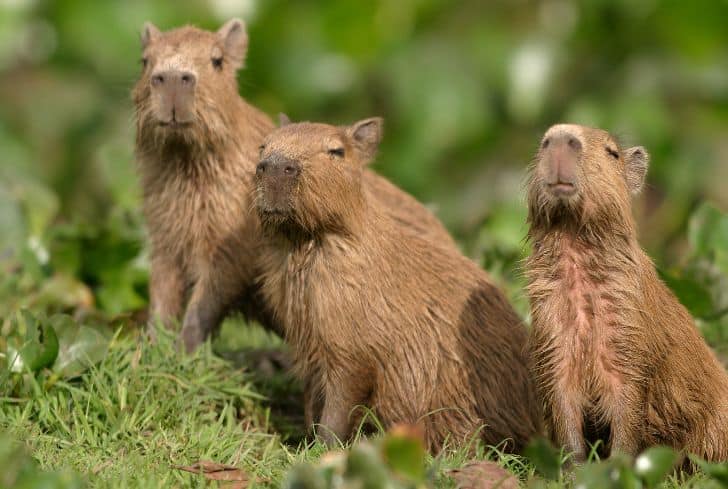
Growing to about 1.3 meters, capybaras are the largest members of the rodent family. They’re semi-aquatic animals living in South America.
Capybaras have a few common characteristics with Beavers, such as stout, brown bodies, webbed feet, and small rounded ears.
They also share the same habitats and diets, although capybaras will include sugar canes on their menu.
But you can note the difference, as capybaras are bigger with hippo-like heads, long legs, and tiny tails.
9. North American Porcupine
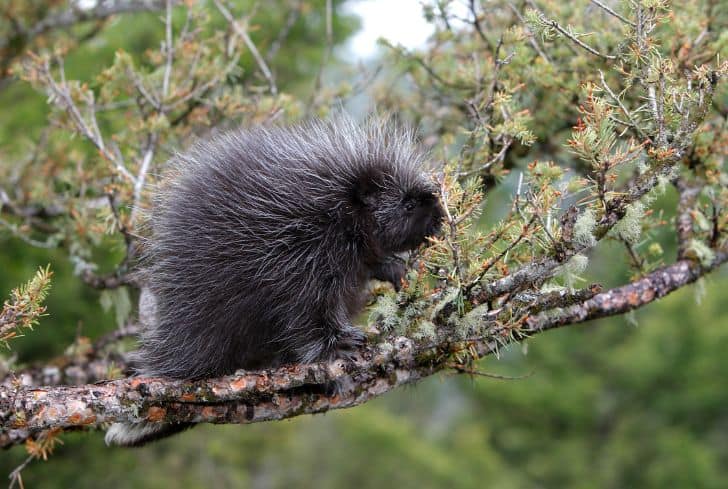
The North American Porcupine is a small animal from the rodent family native to North America.
While you can tell the difference between these porcupines and beavers easily, thanks to their coat of quills, the animals have a few similarities.
Like Beavers, North American Porcupines have stocky bodies supported by short legs. Behavioral similarities include being nocturnal and preferring diets from vegetation.
10. Marmots

Marmots are large rodents from the squirrel family native to North America and Eurasia.
Like Porcupines, marmots share just a few similarities with beavers which is understandable as the animals belong to different families.
Similar physical characteristics include brownish or greyish fur, which makes the two animals resemble each other from a distance because they’re roughly the same size.
Similar traits include constructing dens and a preference for plant-based foods.
But if both animals are close, you can differentiate them as marmots lack tails and have visible short, sharp claws.
11. Sea Otters
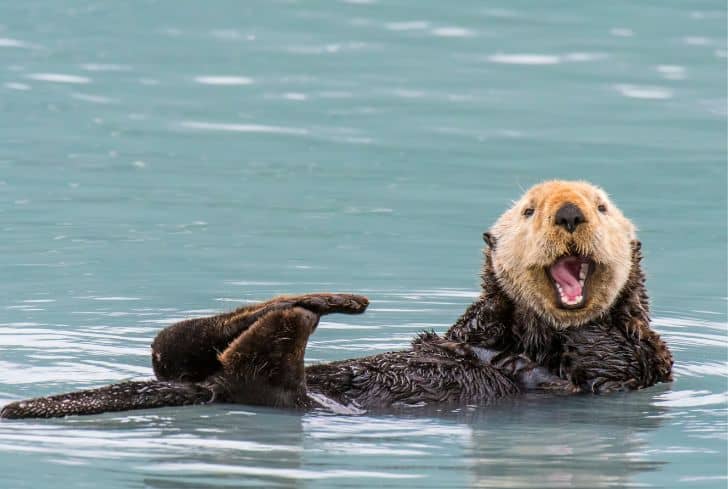
Not to be confused with marine otters (sea otters spend their lives in oceans), sea otters are fuzzy creatures with the densest fur among all animals. The small mammals are relatives of river otters and hail from the Pacific Ocean.
Sea otters have webbed feet, meaning they’re expert swimmers, like beavers. The other notable similar trait is intelligence, as sea otters are intelligent creatures known to crack hard clams and crabs while foraging.
The prime difference is sea otters are way bigger than beavers and are more adapted to aquatic life as they spend their entire lives in oceans not only when feeding but also when sunbathing and socializing.
12. Lesser capybara
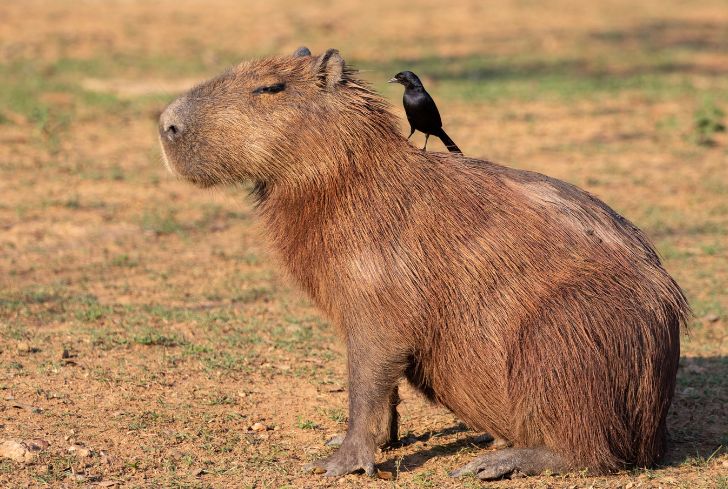
Lesser capybaras are large semi-aquatic rodents commonly found in Panama. The animals are just smaller versions of capybaras.
Lesser capybaras have bodies covered with brown fur like beavers, although they’ve brown underparts. They’re herbivores like their counterparts to complete the few similarities they share with beavers.
You can easily differentiate the two animals as lesser capybaras are giants compared to beavers. They also have short, unnoticeable tails.
13. Marine otters

Marine otters are rare saltwater mammals from the Mustelidae family native to southeastern South America.
Marine otters are similar to beavers in a few perspectives. They have webbed feet and large flat tails. Also, both animals occupy similar ecosystems, with marine otters often found near oceans and only diving in when their stomachs request.
Marine otters are also shy like their counterparts, so good luck finding one close to you.
One of the main differences between these otters and beavers is that the latter are carnivores, although they won’t say no to fruits at every opportunity they get. The otters also lack beavers’ strong teeth.


![Coyote vs Wolf [Differences & Strength Comparison]](https://eartheclipse.com/wp-content/uploads/2022/08/Coyote-vs-wolf.jpg)
![Hyena vs Coyote [Differences & Strength Comparison]](https://eartheclipse.com/wp-content/uploads/2022/08/Hyena-vs-coyote.jpg)
